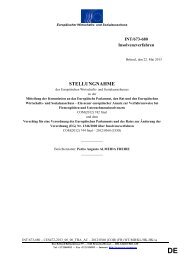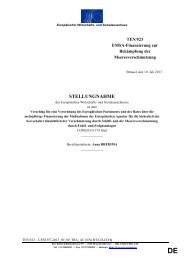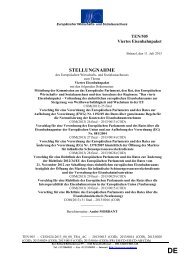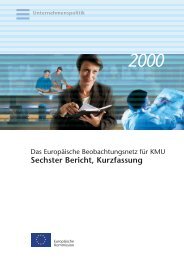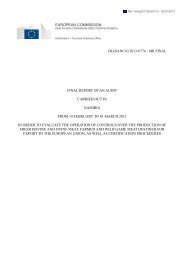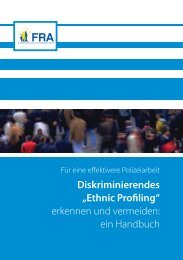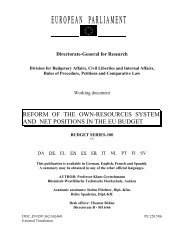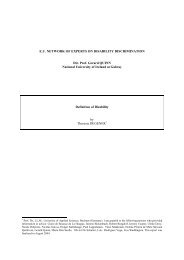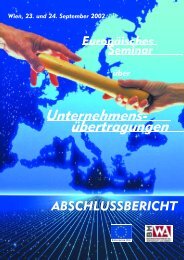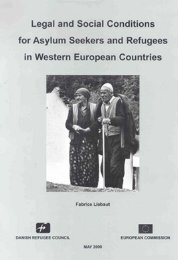I External aid
I External aid
I External aid
You also want an ePaper? Increase the reach of your titles
YUMPU automatically turns print PDFs into web optimized ePapers that Google loves.
Horizontal Issues<br />
Rehabilitation and<br />
reconstruction<br />
operations fill the gap<br />
between emergency<br />
relief and long-term<br />
development<br />
programmes.<br />
38<br />
7. REFUGEES<br />
AND REHABILITATION<br />
ANNUAL REPORT ON THE IMPLEMENTATION OF THE EUROPEAN COMMISSION’S EXTERNAL ASSISTANCE<br />
When a catastrophe or any kind of crisis occurs, emergency<br />
relief is the first concern. But what comes next? What happens<br />
in the medium and long term? How can these situations<br />
be handled on a more permanent basis? Between the initial<br />
emergency relief and longer-term development programmes<br />
there exists a “grey area”, calling for its own particular type<br />
of help. Displaced people, the rebuilding of devastated areas<br />
and the hunt for anti-personnel mines are some of these transitional<br />
interventions.<br />
The concepts of “Linking Relief Rehabilitation and Development”<br />
(LRRD), and of “Developmental Humanitarian Assistance”<br />
originate in the 1980s when both academics and<br />
practitioners voiced concern about the so-called “grey zone”<br />
between humanitarian assistance, rehabilitation and development.<br />
For this reason, over the last ten years, (32) the Commission<br />
has been developing new forms of intervention to<br />
specifically address these situations.<br />
(32) Particularly since its communication to the Council and Parliament 1996 (COM) 153 final of 30.04.1996<br />
(33) http://europa.eu.int/eur-lex/fr/com/rpt/2000/com2000_0367fr01.pdf)<br />
(34) http://europa.eu.int/eur-lex/fr/com/pdf/2000/fr_500PC0831.pdf)<br />
© UNHCR/J. Spaull<br />
The extreme variety of problems to be confronted has led gradually<br />
to the creation of a series of diverse tools. Most of<br />
these have subsequently been brought together within a<br />
single administrative service at the Commission, in an<br />
attempt to achieve more cohesive action in this “link” area.<br />
7.1. Aid to displaced populations:<br />
a geographic approach<br />
According to the most recent estimations by the High Commission<br />
for Refugees (HCR), the number of displaced persons<br />
(refugees, repatriated persons, internally displaced groups) is<br />
over 22 million world-wide, 7 million of whom are in Asia and<br />
almost 600 000 in Latin America.<br />
DIFFERENT KINDS OF DISPLACED POPULATIONS<br />
NEED INTERNATIONAL AID<br />
These can be:<br />
- refugees remaining in their initial country of asylum;<br />
- internally displaced persons who have to survive outside<br />
their original village and region;<br />
- people repatriated from outside or inside their home<br />
country;<br />
- demobilised military and similar people;<br />
- populations living around refugee camps in their initial<br />
asylum country, whose economic situation cannot remain<br />
permanently inferior to that of the refugees living alongside<br />
them;<br />
- populations who have remained in departure areas and<br />
who must be helped to prevent them swelling the number of<br />
refugees.<br />
Perspectives<br />
Following the positive assessment of the implementation of the<br />
Regulation governing <strong>aid</strong> given to displaced populations in Asia<br />
and Latin America, (33) the Commission has decided to maintain<br />
this tool which has shown its usefulness. A new Regulation proposal<br />
has been communicated by the Commission (34) and<br />
should be approved by the Council in 2001.



